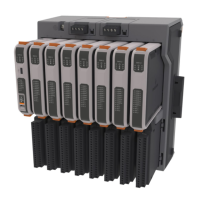Site Considerations for Equipment Installation, Grounding, and Wiring Manual
D301452X012
October 2019
Grounding and Bonding of Solar PV Array 33
Section 6: Grounding and Bonding a Solar PV
Array
This section covers the following topics:
▪
Code Requirements
▪
Ground Attachment
▪
Non-Conductive Components
▪
Non-Conductive Coatings
▪
Grounding Method
▪
Corrosion Protection
▪
Lightining Protection Considerations
6.1 Code Requirements
The National Fire Protection Association
®
(NFPA) Article 690.43 (2014 edition) addresses
Equipment Grounding, and states: “Equipment grounding conductors and devices shall comply with
690.43(A) through (F).” Section (A) states: “Exposed non-current-carrying metal parts of PV module
frames, electrical equipment, and conductor enclosures of PV systems shall be grounded in accordance
with 250.134 or 250.136(A), regardless of voltage.” This requires you to appropriately ground the
frame of the solar panel to earth. This is for safety reasons as well as lightning protection.
If the solar panel and powered equipment are being installed in a hazardous location (explosive
environment, etc.), other more stringent standards apply which are not covered in this section.
Note that remote outdoor electrical installations using solar power are also subject to the
inspection and approval of the local electrical inspector. It is important to check with such local
authorities to ensure compliance with all code requirements, guaranteeing both a safe and legal
installation of equipment.
6.2 Ground Attachment
The actual grounding of the solar panel is straight-forward. Figure 6-1 shows the location of the
frame grounding point of a Model 30J 30W 12V solar panel where you made a connection to an
earth ground through a suitable grounding conductor. Stranded 4 AWG wire should be used for the
grounding conductor to an established earth grounding electrode (as defined by NFPA 70 Article
250 Part III).

